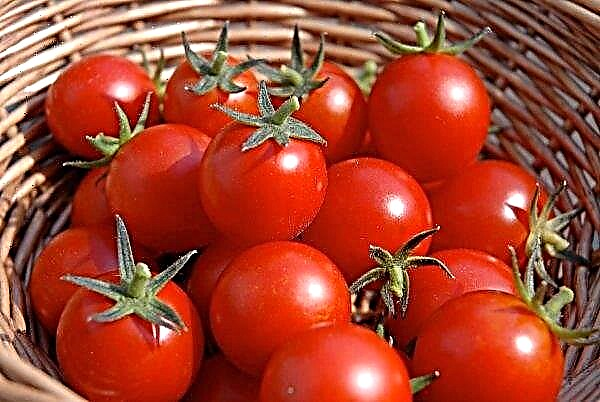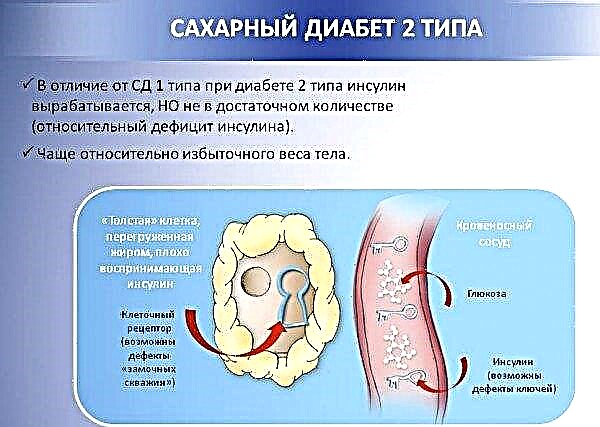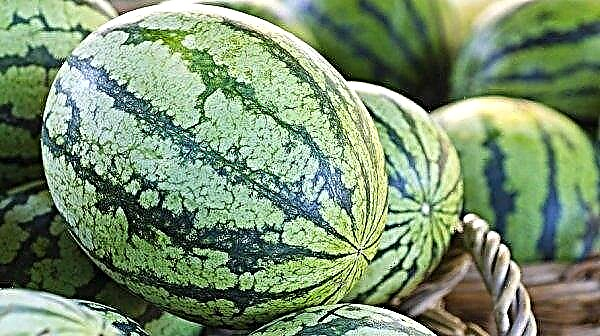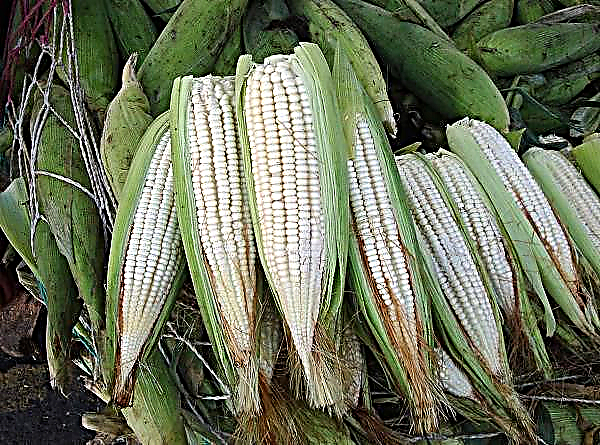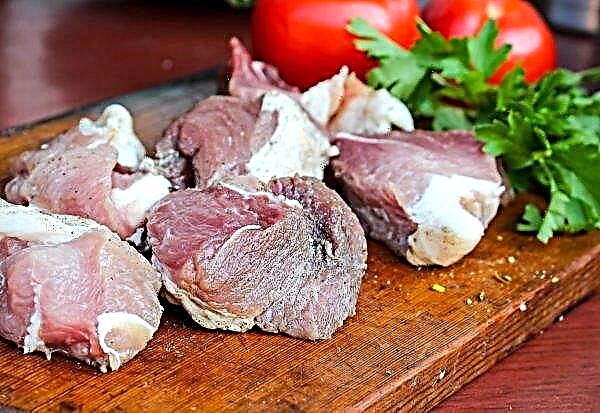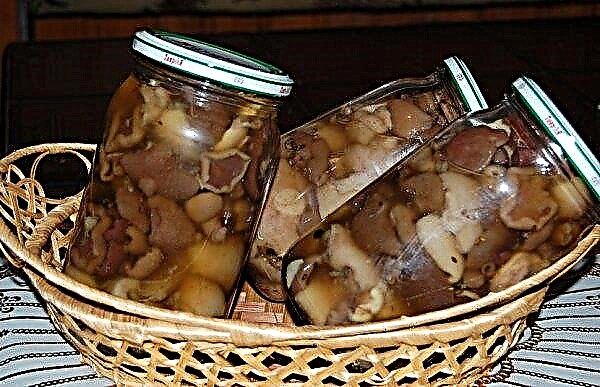Small grape varieties, characterized by a small number of seeds or their soft structure, united by the common name kishmish, despite their less presentable appearance compared to varieties with large berries, are inferior in taste and sometimes superior, especially if they are present in taste distinct muscat notes. An excellent example of what has been said is the Russian Rusbol hybrid, also known as the Mirage raisin, the characteristics and agricultural practices of which are described in this review.
History of grape selection
Rusball is already a middle-aged hybrid. It was first obtained in 1972 on the basis of the Y. I. Potapenko All-Russian Research Institute of Viticulture and Winemaking (Novocherkassk, Rostov Region). In addition to Russian breeders, Bulgarian scientists also participated in the work, which determined the name of the fruit of their labors.
The objective of the selection work was to obtain a high-yielding soft-seeded variety of grapes of universal purpose with good frost resistance. Of the more than three hundred “applicants”, two were finally selected for the cross:Did you know? In the name of the Rusbol hybrid, the first syllables of the two peoples participating in its creation are combined - Russians and Bulgarians.
- "The supreme seedless" - Ukrainian table top grade, in turn derived from cross-crossing of four varieties: red muscat De Madeira and white Halil, as well as very ancient European grapes Madeleine Anzhevin and Central Asian variety Ak Yakdona;
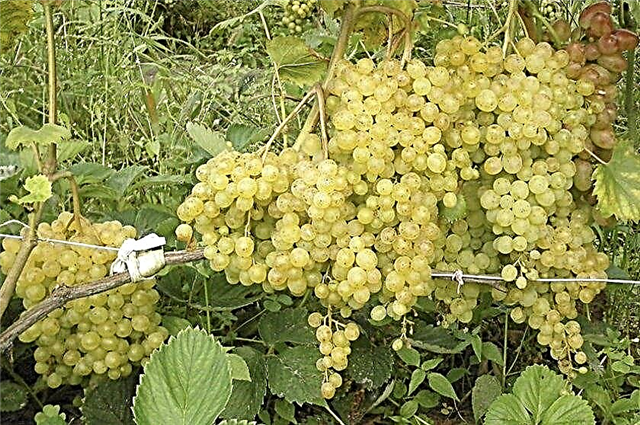
- “Save Villar 12-375”, or “Villar Blanc” - a hybrid of French breeding, created by a complex genetic formula with the participation of the blue Labruschi (we know better as Isabella), the American Rock (Vitis Rupestris) and Berlandier and some other varieties.
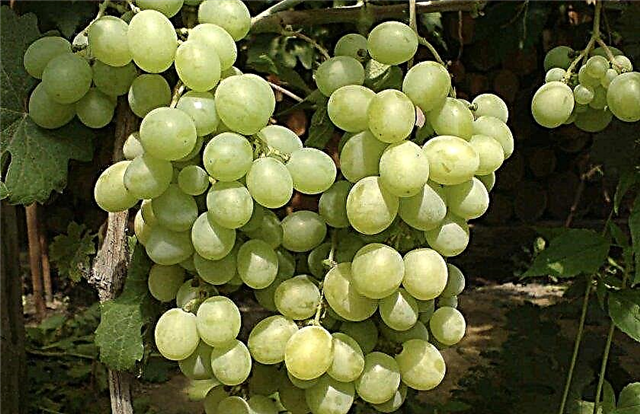
Variety description Rusbol
Rusball can be described as an early ripe table variety of white grapes with soft bones and small but very tasty berries.
Grade characteristics
The morphological and technical features of the hybrid are as follows:
| Growing Regions | In addition to the middle strip, it is suitable for more northern areas, including the Urals and Siberia |
| Bush rooting | High |
| Flowers | Bisexual, flowering is plentiful and long, due to which grapes are not only very easily pollinated, but also acts as a wonderful pollinator for other varieties and hybrids |
| Fruit kidney formation temperature | + 12 ... + 15 ° С |
| The percentage of fruiting kidneys | 85–95% |
| Aging Percentage | 90% |
| Ripening dates (number of days from the beginning of the growing season) | 115–125 |
| Productivity | Very high. Fruiting begins in the first year after planting the vine, however, the true crop can be removed 2-3 years after rooting |
| Frost resistance | High (in a temperate climate does not need shelter) |
| Mildew resistance (on a five-point scale) | 3,2 |
Description of clusters and fruits
As for the grape itself, its main characteristics are given below:
| Grapes | Large and very large, regular conical shape and medium degree of friability. The minimum weight of one bunch is 400 g, the average is 600 g, but on fertile soil and with proper agricultural technology it can reach 1500 g or more |
| The number of clusters on one shoot (average) | 1,5–1,9 |
| Fruit | Small, average length 1.8 cm, width 1.6 cm. Oval, thickened at the base, amber, yellow, yellow-green |
| Bones | Soft, rudimentary. Seedless class - IV |
| Taste qualities of fruits | The taste is quite ordinary, but well balanced. The berries are juicy and sweet. Sugar content varies between 19–21%, acid content - from 5 to 7 g / l |
| Fruit application | Fresh use, drying (raisins) |
Advantages and disadvantages of Rusball grapes
- In Russia, Rusbol confidently ranks among the five best raisins of grape varieties, which is facilitated by such advantages of the hybrid over its counterparts as:
- high frost resistance, allowing you to grow this heat-loving crop as a whole, even in such colder regions as Siberia, and in warmer climatic zones, relieving the owner of worries with organizing sheltering vines for the winter;
- very high and stable productivity (Rusball was nicknamed “suicide grape” among winegrowers, so many clusters are formed on each of its shoots);
- quick recovery in case of frostbite or illiterate pruning (the hybrid is great for beginners who do not have the skills of forming vines);
- no need to install high trellis (a high yield can be obtained with a low garter);
- high sugar content in berries;
- soft bones, thanks to which grapes can be given to small children without fear, without fear that they will choke;
- good resistance to fungal diseases of the vine, in particular, rot, oidium, mildew;
- large clusters, which for rape varieties is rare;
- a large number of flowers, which allows the use of a hybrid as a pollinator for other less actively flowering varieties;
- early ripening;
- good rooting;
- compatibility with any kind of stock;
- unpretentiousness, lack of problems with leaving;
- low susceptibility to wasp attacks, which allows you to grow a good crop without brush protection with special nets;
- universal purpose: fruits can be used both for fresh consumption and for the production of raisins, wine, compotes and jams.
- Rusbol also has drawbacks. Among them should be called:
- small-fruity (the presentation of the bunch is inferior to more noble varieties of table grapes);
- low transportability;
- mediocre taste (lack of its own pronounced "bouquet");
- the presence of rudimentary seeds, which is disadvantageously distinguishes the hybrid from other varieties of raisins and reduces the quality of raisins prepared from it;
- too many brushes that the bush is not able to feed, which requires the gardener additional efforts to normalize the bunches and remove excess ovaries;
- relatively low growth force;
- a tendency to rot and crack berries with improper watering or excess moisture during fruiting.
Varieties of this hybrid
In addition to the “classic” version of “Rusbol”, Russian breeders have bred several modified varieties of this hybrid, the most famous of which are “Rusbol improved” and “Ruskal muscat”.
Did you know? Of the 70 million tons of grapes that are grown in the world every year, not more than a tenth is consumed fresh, only 5% is used for raisins. Everything else is the raw material for making wines and cognacs.
What is good "improved Rusball"
This modification of the Mirage raisin was bred at the same research institute as the main hybrid, by crossbreeding it with Villar Blanc and additionally with another brainchild of scientists from Novocherkassk - the Delight white table grapes increased sugar accumulation, excellent frost resistance and a very early ripening period. The hybrid resulting from such an improvement, indeed, has a number of advantages compared to the base form, however, experts also note some characteristics that make Rusbol Improved inferior to its progenitor.
The hybrid resulting from such an improvement, indeed, has a number of advantages compared to the base form, however, experts also note some characteristics that make Rusbol Improved inferior to its progenitor.
The comparative characteristics of the basic and improved Rusbol are given in the table:
| Advantages of "Rusbol improved" in comparison with a standard hybrid | The disadvantages of "Rusbola improved" compared to the standard hybrid |
|
|
Comparing these two types of raisins, most experts, however, note that the only noticeable difference between them is the faster maturation of the improved hybrid, all other parameters differ slightly.
"Muscat Muscovite" - a special raisin
The Muscat variety "Rusbola" breeders from VNII VIV them. Y. Potapenko was obtained by crossing the basic version with white table grapes “Bulgaria Sustainable”, which, in turn, is an improved modification of the variety “Bulgaria” due to the addition of “Muscat de Saint-Valle” to its genetic formula. Comparing the parent and the modified form, you can also distinguish the characteristics by which the first is second to the second, and vice versa. In the form of a table they can be represented as follows:
Comparing the parent and the modified form, you can also distinguish the characteristics by which the first is second to the second, and vice versa. In the form of a table they can be represented as follows:
| Advantages of "Muscat Rusbol" in comparison with a standard hybrid | Disadvantages of "Muscat Rusbola" compared to the standard hybrid |
|
|
Did you know? Translated from Arabic, “kishmish” literally means “squeezed, squeezed grapes,” that is, simply put, raisins. Thus, the legend that the word “mouse, mouse!” Is laid down in this word, which in ancient times growers drove rodents away from small and sweet fruits, has no scientific basis.
Features of planting and growing a hybrid
The Mirage raisins are planted according to the standard rules for any grape:
- for the vine it is necessary to choose the most lit place, protected from drafts and the north wind (for example, next to the south side of the house);
- the maximum permissible proximity of groundwater to the surface of the earth is 4–5 m, otherwise the deep roots of the vine will rot in conditions of excessive humidity (if it is not possible to choose a place on a hill for a seedling, it is necessary to provide a water drainage system);
- ideal soil for grapes is chernozem with a neutral or slightly acidic pH level, sandstone is also allowed, but clayey heavy soils are not suitable for grapes;
- You can plant a vine in spring or autumn, but practice shows that spring seedlings take root much better.
The landing scheme is as follows:Important! When planting grapes in autumn, it is important to calculate the time in such a way that by the time of the first frosts, the vine is already in the ground for at least two months, otherwise the bush will not have time to take root and may freeze.
- Dig a hole with a depth of 100x100 cm.
- Put a drainage layer (for example, fine gravel, screenings or broken brick) on the bottom of the pit, and on top add a small layer of black soil mixed with humus and universal mineral fertilizers (for example, superphosphate, urea, potassium sulfate).
- Inspect the seedling, remove damaged roots, shorten healthy ones by a few centimeters.
- For better rooting, dip the roots of the seedling in the pulp prepared from water, clay and humus, and leave for a while until the substance dries.
- From the fertile land, make a small mound at the bottom of the pit.
- Place the seedling in the pit so that its roots diverge along the slopes of the mound in different directions. Make sure that the root “heel” is directed to the south, and the root neck does not reach the surface of the pit by 5-7 cm.
- Place in the corner of the pit a vertically trimmed plastic pipe 120–140 cm long for watering the young vine.
- Cover the pit with earth, leaving about 20 cm to the surface.
- Install a ring of dense material 20 cm high around the stem of the vine (you can use a cut plastic bottle) so that the distance from the stem to the inner diameter of the ring is 5–6 cm.
- Fill the ring with fine gravel or dropouts. After two years, the ring can be removed, during which time it will allow the bush to form a stronger root system and protect it from releasing weak side shoots.
- Tamp the ground.
- Water the trunk circle abundantly, being careful not to wet the vine.
- When water is absorbed, cover the soil around the seedling with mulch (peat, sawdust, wood shavings or straw).


Description of grape care "Rusbol"
“Rusball” differs from many other grape varieties and hybrids by its unpretentiousness, however, the standard rules for caring for the vine should be known to the winegrower and strictly observe them. Only in this case can a high yield be expected.
Watering and feeding
Frequent and meager watering of grapes is the main mistake made by inexperienced gardeners. Long and powerful roots of the vine can do without artificial irrigation, being satisfied with precipitation and water extracted from the depths of the soil. The exception is only young seedlings, however, it is also important for them that water rarely comes in, but in large quantities. It is also very important to prevent moisture from getting on the leaves, stems and trunk of the bush, from which the grapes begin to be affected by various fungal infections. For these purposes, during the first two years, seedlings are watered through a pipe dug into the ground, for an adult vine it is best to dig out special ring-shaped trenches around the bush.
It is also very important to prevent moisture from getting on the leaves, stems and trunk of the bush, from which the grapes begin to be affected by various fungal infections. For these purposes, during the first two years, seedlings are watered through a pipe dug into the ground, for an adult vine it is best to dig out special ring-shaped trenches around the bush.
The grape watering scheme is shown in the table:Important! During flowering, grapes should not be watered or fertilized. Also, excess moisture is unacceptable during the fruiting period, this leads to cracking of the fruit.
| Watering Rules | Young seedlings (first two years after planting) | Adult vine |
| Water consumption with standard irrigation per bush | 20 l | 40-50 l |
| Water consumption during winter irrigation | 40 l | 70–80 l |
| Frequency of watering during the growing season | Once a week | Watering is carried out 4 times per season: at the beginning of the growing season, before flowering, after flowering and before the onset of frost |
| Frequency of watering during fruiting | 1 time in 2 weeks |
Grapes produce high yields on fertile soils, but can also be grown quite well in poor land. Feeding bushes, of course, is necessary, but this should not be abused, since the nutrient deficiency of the vine transfers easier than their excess.
The first top dressing of grapes is carried out in the third year after planting.
Video: How to feed grapes after flowering
Organic and mineral fertilizers alternate for top dressing. As organics, it is best to use manure or rotted compost. As for mineral fertilizing, they should be applied 2-3 times during the season: at the beginning of the growing season, at the stage of laying berries and about 20 days before harvesting, while the nitrogen component (for example, urea) is included only during the first feeding. In the future, only potash and phosphorus fertilizers are introduced so that the bush sends the main vitality to the laying of fruits, and not to the formation of green mass.
The normalization of Rusbola in bunches
One of the main problems of the Mirage raisin is excessive congestion with fruit brushes. Since they are formed 1–2 on each shoot and at the same time at the maturity stage they become very difficult, such an abundance of the crop poses a serious threat to the vine.
 For this reason, extra shoots and inflorescences from Rusbol should be removed.As the young shoots grow to 7–10 cm (3-5 leaves), the bush eliminates excessive thickening and carefully monitors the laying of brushes. More than two clusters should not be planted on a branch, it is even better to leave one, the largest and closest to the base - in this case, the probability that the shoot breaks off under the weight of the grapes is minimal.
For this reason, extra shoots and inflorescences from Rusbol should be removed.As the young shoots grow to 7–10 cm (3-5 leaves), the bush eliminates excessive thickening and carefully monitors the laying of brushes. More than two clusters should not be planted on a branch, it is even better to leave one, the largest and closest to the base - in this case, the probability that the shoot breaks off under the weight of the grapes is minimal.
When leaving two clusters, you need to ensure that they are not in close proximity to each other. In some cases, if the brush is very large, you can even carefully remove part of the ovaries (the top of the inflorescence), this will accelerate ripening, prevent peeling and improve the quality of the crop.
Important! A healthy adult Rusbol grape bush can successfully form no more than 45 clusters, although the optimum load is considered to be between 30 and 40.
Shrubs Formation
“Rusball” bears good fruit on both young and last year's shoots, while giving a pretty good growth (especially when grafting a hybrid on vigorous grapes). Given the mass formation of bunches, including at the base of the shoot, short or medium pruning is preferable for this vine: in the first case, the shoots are shortened to 2-3 buds, in the second from 6 to 8 eyes. The Mirage raisin can be grown on high supports with medium or short “sleeves”. During pruning, in the latter case, 3-4 of the strongest shoots are selected, each of which leaves from 12 to 16 buds, so the total number of fruiting eyes should be 30–45 pieces, which corresponds to the correct normalization of bunches.
The Mirage raisin can be grown on high supports with medium or short “sleeves”. During pruning, in the latter case, 3-4 of the strongest shoots are selected, each of which leaves from 12 to 16 buds, so the total number of fruiting eyes should be 30–45 pieces, which corresponds to the correct normalization of bunches.
Graft
In order for Rusball to form a stronger and taller bush, many farmers use a vaccination of a hybrid on other grape varieties. Due to its endurance and unpretentiousness, the Mirage raisins take root on any rootstocks, so their choice is practically unlimited. Given the purpose of vaccination, the main quality by which the stock should be determined is not its frost resistance or disease resistance (for a hybrid they are not a problem), but the growth force, it is at Rusbol that leaves much to be desired.
Check out the features of growing such grape varieties:
How to shelter for the winter
One of the main advantages of the Mirage raisin is the ability to tolerate rather severe frosts without special shelter, which allows gardeners growing grapes in the temperate zone not to remove the vine from its support for the winter. Perennial shoots of the hybrid are so resistant to cold weather that they can recover and bear fruit even with very severe frostbite. However, young seedlings, especially in the case of autumn planting, still need to be covered for the winter. This is done according to the standard procedure:
However, young seedlings, especially in the case of autumn planting, still need to be covered for the winter. This is done according to the standard procedure:
- the vine should be removed from the support and laid out on the ground;
- to attach the shoots to the ground, you can use wire studs or any suitable load;
- a thick layer of dead leaves, mowed grass, peat, sawdust or other organic matter is lined on top of the vine;
- in addition, you can cover the grapes with burlap or rags;
- the shelter is attached to the ground with bricks or other oppression, so that the structure does not collapse under a gust of wind;
- after the snow falls on the constructed shelter, it is advisable to sweep as large a snowdrift as possible;
- during warming, it is important to split the crust and icing over the grapes to ensure a constant circulation of air inside the shelter.
Diseases and Pests
The resistance of Rusbol to fungal infections is so great that many gardeners do not use preventive treatments when growing grapes. However, if in the territory where the bushes were planted, a pathogenic fungus is present (for example, it affects the vine in a neighboring area), in order to prevent infection, this procedure is still worthwhile. This is done in 3-4 stages, namely:
- at the end of winter, while the buds have not yet formed;
- before flowering;
- after flowering;
- at the stage of laying fruit brushes.
 Fungicidal preparations are used for processing - systemic, contact or combined, for example:
Fungicidal preparations are used for processing - systemic, contact or combined, for example:| Systemic fungicides for grapes | Contact fungicides for grapes | Combined fungicides for grapes |
| Strobi "Topaz" Chorus Falcon Fundazole | "Poliram" Home Folpan Tsineb | Switch Flint Shavit Cabrio Top Mikal |
The choice between these means depends on the type and level of threat.
As for pests, for Rusbol the most dangerous are:
- ticks - grape, spider web and felt (grape itch);
- phylloxera (grape aphid);
- leaflet;
- grape flea.
 For preventive purposes, in early May ("on the fifth sheet"), the vine can be treated with insecticides and acaricides:
For preventive purposes, in early May ("on the fifth sheet"), the vine can be treated with insecticides and acaricides:- against insects on grapes such drugs as Actellik, Mitak, Oksikhom, Fastak, Khomus;
- “Aliot”, “Sunmayt”, “Neoron”, “Plantafol”, “Iskra-M” are effective for combating ticks;
- “Fufanon-Nova”, “Spark double effect”, “Talstar” and other universal preparations possess systemic action against insects and ticks.
Important! For safety reasons, any prophylactic or therapeutic treatment of the vine with pesticides should be completed no later than a month before the harvest.
Reviews
A suicide cultivar by the definition of one winegrower. Indeed, very fruitful, I leave 2 inflorescences, but the 2nd and 3rd, because the 1st is usually huge and requires care when cutting. It has been on the arch for 5 years, well tolerated and this winter. Unpretentious in terms of care, stable. Cons-sometimes gives rudiments, burst after the rain last summer, although this is not typical. The market is going well. It turns out a good raisin, albeit a bit small.




